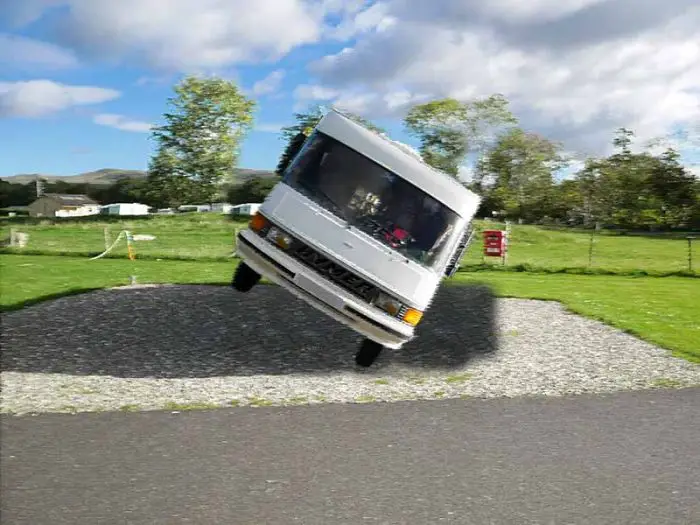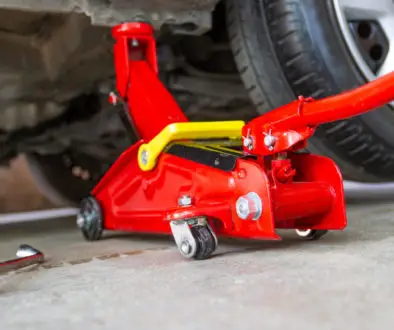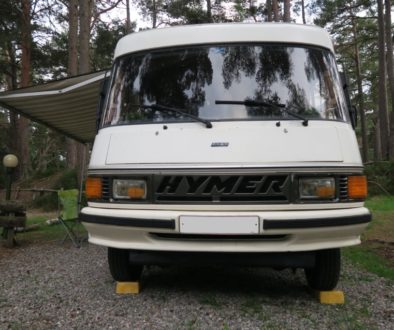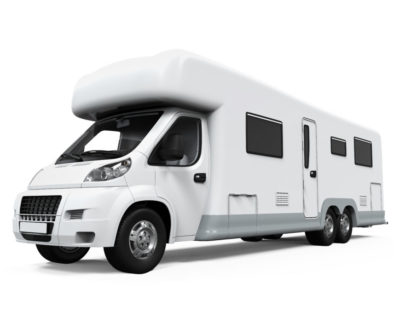Can a Motorhome Blow Over?
Can a motorhome actually blow over?
On a very windy night, it can certainly feel like a motorhome can blow over. But the chances of that happening are very low. If your motorhome blows over you won’t just be worried about your motorhome. I would be more worried about being blown away.
The chances of blowing a stationary motorhome over that’s parked on a level surface is very unlikely. A motorhome is incredibly heavy and has a relatively low centre of gravity. If you are driving the motorhome in the wind that’s a different story.
That is not to say that they can’t be blown over, there have been cases.
The centre of gravity of a motorhome is actually quite low. Most of the weight is low down like the engine and the water tanks, fuel tank. Although high sided, it would be extremely unlikely for one to blow over.
If you were badly parked on a hill in a way that might help the wind do its job then, in that case, it may actually go over. If you are parked in a mountainous area where the wind can be funnelled between two hills and is very gusty, that could also be a problem.
If you are on flat ground there is very little chance. There are trucks and vans all over the world the same height and weight as a motorhome. How many have you seen being blown over while parked’? It is possible and does happen on rare occasions but most high sided vehicles go over while driving.
With a few simple precautions, you can help your motorhome stay upright and stay stable.
Construction of a Motorhome
A motorhome is constructed so that its suitable for driving on the road. If the centre of gravity is too high then they would overturn at the first corner you drove around. They are heavy beasts and designed to carry a lot of water which is usually stored low down in the motorhome. They also have all your stuff in there and most of it is stored low down.
Motorhome chassis are very heavily built and have an engine so tend to weigh a lot which helps to keep the motorhome well grounded.
The actual body of the motorhome is mostly aluminium or fibreglass which is relatively light compared to the constriction of the base vehicle.
A motorhome should be able to take a severe bashing before it blows over. Last time we were in gale force winds I was more worried about the 27-year-old windows blowing in but it all held just fine and I didn’t even have the stabilisers down. It was a bit rocky being blown by the wind but I was never worried about it blowing over. Kind of rocks you to sleep.
Stabilizing your motorhome in the wind
If it gets really windy it can feel quite scary inside. Especially if you are in a raised bed like the one above the cab for instance. You will feel every movement the motorhome makes in the wind.
One thing to do if you are not already doing so is to put down the stabilisers. Most motorhomes will have them and if not they are not too difficult to fit. Stabilisers will take the rocking motion out of the motorhome making it much steadier. This will also make it feel much more secure when you are inside sleeping.
If you are really worried about the wind, you could do what boats do and turn into the wind. This will reduce the surface area exposed to the wind and would make it more comfortable inside. Motorhomes are designed to go through the wind in this fashion. When they are being driven they will be exposed to winds of over 60 mph for hours without a problem depending on the speed you are driving at.
Turning into the wind is probably the best option for a seriously extreme situation.
Streamline your motorhome
Once you are stabilised its s good idea to wind down things like aerials or satellite dishes. Pack up the motorhome exterior as if you were getting ready for travel, so no loose things or things that will catch the wind.
The awning or safari room should be put away as well. Although the wind won’t blow a motorhome over we don’t want to give the wind a sail and if your awning goes that’s a whole heap of expense and mess you will have to deal with, so get it all away.
Batten down the hatches
Make sure there all the vents, windows and hatches are all closed and locked. You do not want the wind grabbing an open window and ripping it off.
Basically in a motorhome, if the weather turns bad and you know it’s going to be really windy then just set up the motorhome as if you were leaving. The only differences would be that you are hopefully parked facing into the wind and you have your stabilisers down.
If you are on a campsite then don’t forget about the electric hookup if you are turning to face the wind.
Do that and everything should be fine. If your motorhome does blow over you at least tried everything to prevent it.
Driving a Motorhome in the Wind
If you are driving the motorhome in very high winds a whole other world of problems come in to play. The high sides of the motorhome and the speed of travel can create incredible forces on the motorhome that could very likely to be enough to tip it over.
Even driving along a dual carriageway you will notice the pull on the steering if you are being overtaken by a large vehicle. It can be quite startling.
The first time I drove in windy conditions was a bit of an eye-opener. I have driven vans for years but the motorhome is in a league of its own, it really gets buffeted by the wind and can be a challenge to keep under control.
The best thing to do in high winds is not to drive but if you must drive then drive slow. If you feel you are in danger stop. Being late or missing a camping place is not a big deal compared to overturning your motorhome on a busy road.
If there are signs saying that a road or bridge is closed due to high winds pay attention to them, it’s much easier to go on an alternative route or even park up for the night.
The great thing about a motorhome is you have your home with you. High winds don’t last forever, sometimes you can stop and have something to eat, a cup of tea and some dessert and by that time the wind has reduced speed.
Ultimately you as the driver have to make the call whether its safe to drive or not. Sometimes it can be a difficult call when you have to be in a place at a certain time or you have to get home for work, I understand that and have been in that very situation. But you have to weigh up the risks to you and your family and decide if it’s worth the risk or not. Make the right choice and keep yourself and other road users alive.
In Conclusion
If you are looking at enduring high winds in a motorhome then;
- Face the motorhome into the wind
- Close all windows and hatches
- Lower aerials and satellite dishes anything else on the roof that wouldn’t be up while driving
- Don’t put up an awning. If you have one up, take it down.
- Put down stabilisers if you have them
- If possible don’t drive in high winds
If you have had a different experience of the wind from me please add any tips that you may have below. They may be very helpful to somebody




